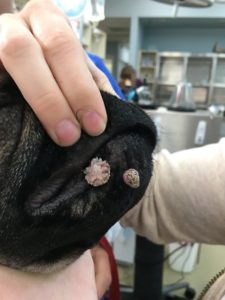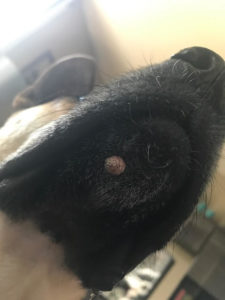Pyodermameans “pus in the skin”, itis a common bacterial infection of the skin and hair follicles that can cause itchiness, inflammation, a rash, and other uncomfortable symptoms. Cats and dogs can develop the condition when bacteria multiply to abnormal levels on the skin.
Causes of Pyoderma
Bacteria usually live on the surface of your pet’s skin without causing infection. The bacterium staphylococcus intermediusis normally responsible for pyoderma. It occurs naturally on the skin of pets (especially dogs), but under certain conditions, it can cause opportunistic secondary infections.
Pyoderma occurs when the immune system is unable to prevent bacterial overgrowth. It often develops when an underlying health condition causes your pet’s skin to itch. Scratching then causes lesions in the skin that bacteria can enter.
Conditions that contribute to the development of pyoderma include skin trauma from scratching or other injuries, allergies, autoimmune disorders, and immunosuppression. Animals with short hair or skin folds are also more at risk of developing pyoderma.
Symptoms of Pyoderma
The symptoms of pyoderma are usually very noticeable. Visit your veterinarian if your pet displays any of the following common signs of infection:
- Rash
- Excessive itching
- Redness and inflammation
- Pimples or pustules
- A crusty or scaly appearance to the skin
- Hair loss
- Oozing sores
Diagnosis of Pyoderma
If your veterinarian suspects that your pet has pyoderma, they will perform a physical examination of the skin to look for symptoms of the disease. Skin scrapings are usually taken from infected areas and microscopically analyzed to identify the types of microbes involved.
Other diagnostic tests available to your veterinarian include blood tests, tissue biopsies, bacterial cultures, and urinalyses. These tests are used to identify the type of bacteria causing the infection, as well as any underlying health conditions that may have contributed to it.
Treatment of Pyoderma
Pyoderma is typically treated with a course of antibiotics to clear up the infection. Medications may be injected, given orally, or applied topically to the skin. Your veterinarian may also recommend medicated shampoos or other products to cleanse infected skin. It’s important to follow treatment guidelines carefully and complete all courses of medication to prevent the infection from recurring.
Pyoderma usually responds well to treatment. In the case of chronic or recurring infections, your veterinarian may need to carry out additional tests to identify any underlying health conditions contributing to infection.
Prevention of Pyoderma
Although there is no guaranteed method for preventing pyoderma, there are several measures you can take to minimize the risk of your pet developing the condition.
One of the best ways to boost your pet’s immune system and help them fight infection is by feeding a healthy and nutritionally balanced diet. Regularly bathing and grooming your pet also helps prevent skin infections. Finally, check your pet’s skin regularly for signs of infection, and remember to schedule routine checkups with your veterinarian.



